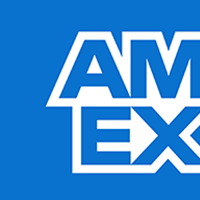Gold Bar Weights: Key Measures for Savvy Investors
By Bullion Standard ·
5 min read

Iconic American Gold Eagle & Buffalo coins displayed on silver bars, representing precious metal investments with flair.
Unveiling the Value of Gold Bars: A Guide for Investors
Gold bars, often seen as a cornerstone of precious metal investment, hold a timeless allure for both novice investors and seasoned enthusiasts. As the tangible embodiment of wealth, gold bars come in various shapes and sizes, each carrying its unique appeal and strategic importance. For investors aiming to diversify their portfolios, understanding the nuances of gold bar weights is crucial. This foundational knowledge not only impacts purchasing decisions but also influences overall investment strategies, shedding light on potential returns and risks. In this article, we'll explore the diverse range of gold bar weights and delve into their significant implications for strategic investment planning.
Gold Bar Weights: Key Considerations for Informed Decisions
- Different Sizes of Gold Bars:
Gold bars are available in a range of sizes to suit different investment capacities and objectives, from the widely popular 1 oz bars, convenient for smaller investors, to the colossal 400 oz Good Delivery bars, favored by institutional traders. The options along this spectrum provide flexibility for various budgetary and strategic needs.
- Measurement of Gold Bar Weight:
The weight of gold bars is typically measured using the troy ounce system, a universally accepted standard in the precious metals market. An ancient unit of measure still in use today, the troy ounce (equivalent to approximately 31.10 grams) is essential for evaluating both the spot price of gold and individual bar premiums.
- Size and Market Value Correlation:
The weight of a gold bar has a direct impact on its market value and appeal. Generally, larger bars might offer a lower premium over the spot price due to economies of scale, making them more attractive for long-term holding. In contrast, smaller bars, while more expensive per ounce, offer greater flexibility and liquidity, meeting varying investor needs.
Diving into Gold Bar Types: From Ounces to Kilobars
- 1 oz Gold Bars:
Celebrated for their affordability and ease of liquidity, 1 oz gold bars are a favorite among private investors. Their manageable size allows for straightforward transaction and storage, making them ideal for gradual portfolio accumulation.
- Kilogram Bars (Kilobars):
At approximately 32.15 troy ounces, Kilobars serve as a balanced investment for those seeking meaningful exposure to gold with moderate storage and transportation concerns. They offer a compromise between the portability of smaller bars and the lower premiums of larger bars. Discover diverse options like the 1 Kilo Gold Bar for substantial investments.
- 400 oz Good Delivery Bars:
The premier choice for banks and government reserves, 400 oz Good Delivery bars are synonymous with large-scale gold transactions. Used in international trading, these bars carry significant weight and require specialized handling, reflecting their pivotal role in global financial systems.
- Other Gold Bar Types:
Beyond the standard options, there are specialized gold bar types like fractional ounce bars, which cater to those interested in small-scale investments, or minted bars with higher aesthetic and collectible value. These alternatives, such as the 50 Gram Gold Bar PAMP Fortuna, may appeal to investors with niche interests or specific budget considerations.

Conclusion
Understanding gold bar weights and their implications is essential for any investor looking to make informed decisions and optimize their precious metal portfolio. By considering factors like liquidity, storage, and market conditions, investors can tailor their strategies to meet personal goals and ensure long-term financial growth.
Frequently Asked Questions (FAQ)
1. What factors should investors consider when choosing the ideal weight of a gold bar for their portfolio?
Investors should assess liquidity needs, storage capacity, and market forecasts when selecting bar weights.
2. How does the authenticity and purity of different gold bar weights impact investment decisions?
Gold bar authenticity and purity are critical for ensuring market value and reassure long-term investment security.
3. Why might some investors prefer kilobar gold bars over standard Good Delivery bars?
Kilobars offer better liquidity and easier storage compared to the larger Good Delivery bars.
4. What are the pros and cons of investing in smaller versus larger gold bars in terms of liquidity and accessibility?
Smaller bars are more liquid and easier to sell, while larger bars offer economies of scale but pose challenges in divisibility and transport.
5. How does the fluctuation in gold prices influence decisions on buying gold bars of various weights?
Price fluctuations may alter the perceived value of different-sized bars, prompting strategic buying or selling to capitalize on market movements, as analyzed in Can Gold Prices Drop 30%?.
Enhance Your Gold Investment Strategy
Whether you're drawn to the approachable 1 oz bars or the weighty 400 oz Good Delivery bars, understanding the intricacies of gold bar weights is instrumental for strategic investing. Each size offers its unique blend of advantages in terms of flexibility, liquidity, and cost efficiency. As you shape your investment portfolio, consider exploring our diverse range of gold products at Bullion Standard. Our assortment is designed to meet the varied needs of investors, whether you're looking for incremental growth or bulk investment opportunities. Discover how the right gold bar can fortify your financial strategy today.





















